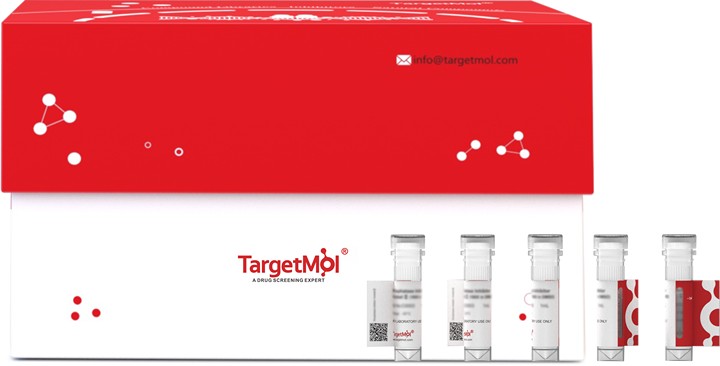Shopping Cart
- Remove All
 Your shopping cart is currently empty
Your shopping cart is currently empty

M-CSF/CSF1 Protein, Human, Recombinant (Isoform 3) is expressed in HEK293 Cells. The accession number is P09603-3.

| Pack Size | Price | Availability | Quantity |
|---|---|---|---|
| 20 μg | $275 | Backorder | |
| 100 μg | $695 | Backorder | |
| 1 mg | $4,530 | Backorder |
| Biological Activity | Measured in a cell proliferation assay using M‑NFS‑60 mouse myelogenous leukemia lymphoblast cells. The ED50 for this effect is typically 3-15 ng/mL. |
| Description | M-CSF/CSF1 Protein, Human, Recombinant (Isoform 3) is expressed in HEK293 Cells. The accession number is P09603-3. |
| Species | Human |
| Expression System | HEK293 Cells |
| Tag | Tag Free |
| Accession Number | P09603-3 |
| Synonyms | PG-M-CSF,MGC31930,M-CSF,MCSF,CSF-1 |
| Construction | A DNA sequence encoding the Human CSF1 (P09603-3) (Met1-Ser190) was expressed. |
| Protein Purity | ≥ 95% as determined by SDS-PAGE. ≥ 95% as determined by SEC-HPLC. |
| Molecular Weight | 18.41 kDa (predicted); 21.8 kDa and 19.3 kDa (reducing contition) |
| Endotoxin | < 10 EU per mg of the protein. |
| Formulation | Lyophilized from sterile PBS, pH 7.4. Please contact us for any concerns or special requirements. Normally 5 % - 8 % trehalose, mannitol and 0.01% Tween 80 are added as protectants before lyophilization. Please refer to the specific buffer information in the hardcopy of datasheet or the lot-specific COA. |
| Reconstitution | Please refer to the lot-specific COA. |
| Stability & Storage | It is recommended to store recombinant proteins at -20°C to -80°C for future use. Lyophilized powders can be stably stored for over 12 months, while liquid products can be stored for 6-12 months at -80°C. For reconstituted protein solutions, the solution can be stored at -20°C to -80°C for at least 3 months. Please avoid multiple freeze-thaw cycles and store products in aliquots. |
| Shipping | In general, Lyophilized powders are shipping with blue ice. |
| Research Background | Macrophage colony-stimulating factor 1, also known as CSF-1, M-CSF, Lanimostim and CSF1, is a single-pass membrane protein which is disulfide-linked as a homodimer or heterodimer. Granulocyte / macrophage colony-stimulating factors are cytokines that act in hematopoiesis by controlling the production, differentiation, and function of 2 related white cell populations of the blood, the granulocytes and the monocytes-macrophages. M-CSF/CSF-1 is known to facilitate monocyte survival, monocyte-to-macrophage conversion, and macrophage proliferation. M-CSF/CSF-1 is a secreted cytokine which influences hemopoietic stem cells to differentiate into macrophages or other related cell types. It binds to the Colony stimulating factor 1 receptor. M-CSF/CSF-1 may also be involved in development of the placenta. The active form of M-CSF/CSF-1 is found extracellularly as a disulfide-linked homodimer, and is thought to be produced by proteolytic cleavage of membrane-bound precursors. M-CSF/CSF-1 induces cells of the monocyte/macrophage lineage. It also plays a role in immunological defenses, bone metabolism, lipoproteins clearance, fertility and pregnancy. Upregulation of M-CSF/CSF-1 in the infarcted myocardium may have an active role in healing not only through its effects on cells of monocyte/macrophage lineage, but also by regulating endothelial cell chemokine expression. |

Copyright © 2015-2025 TargetMol Chemicals Inc. All Rights Reserved.